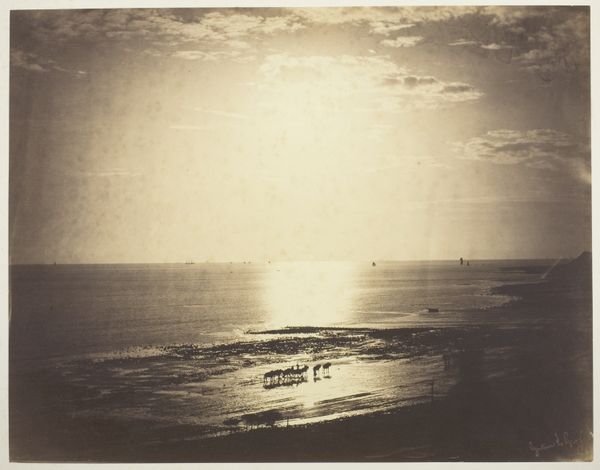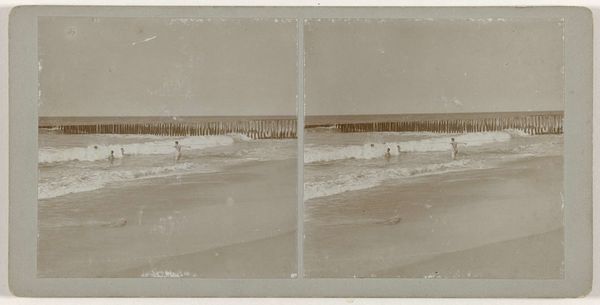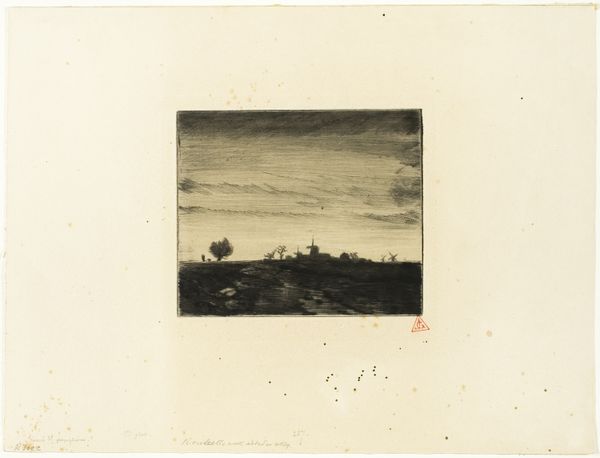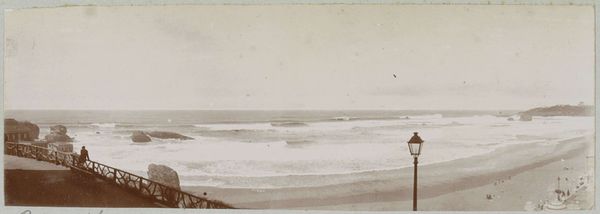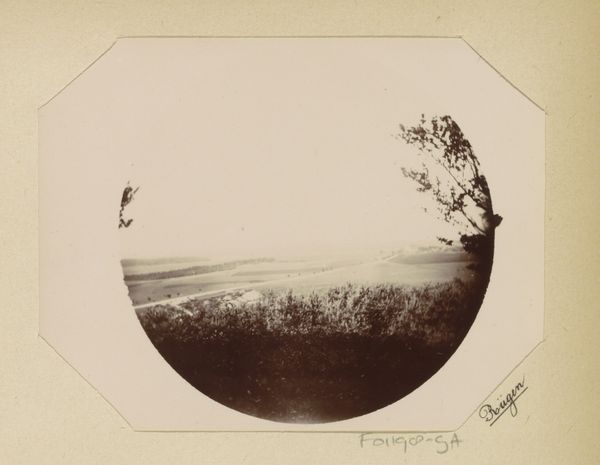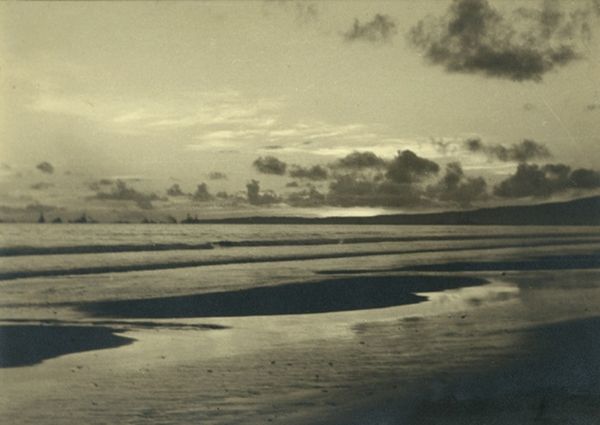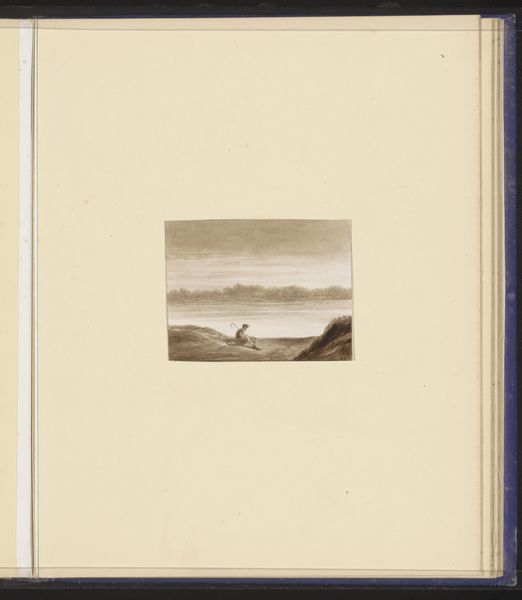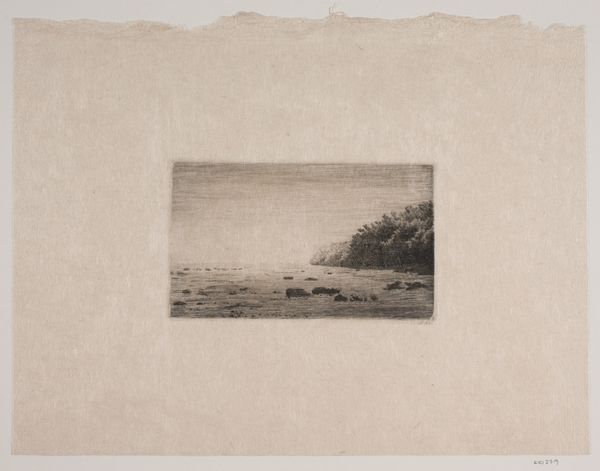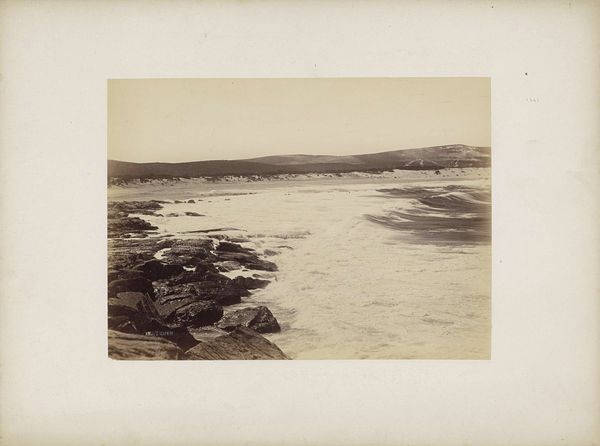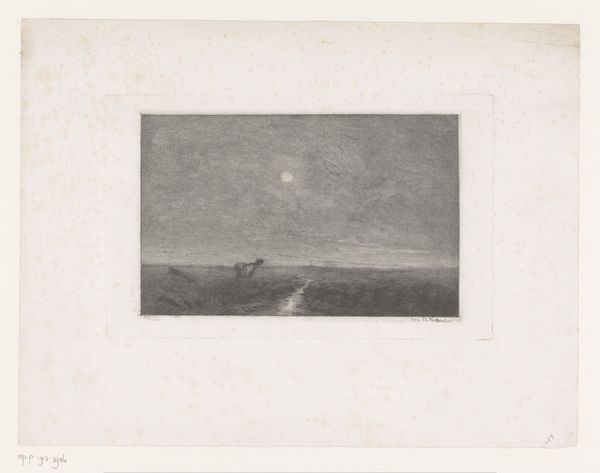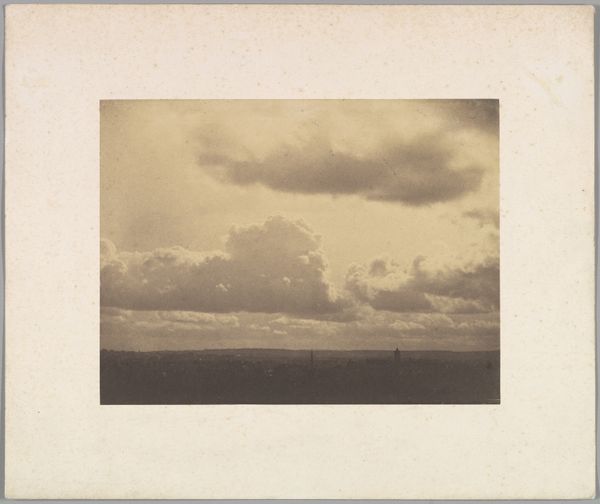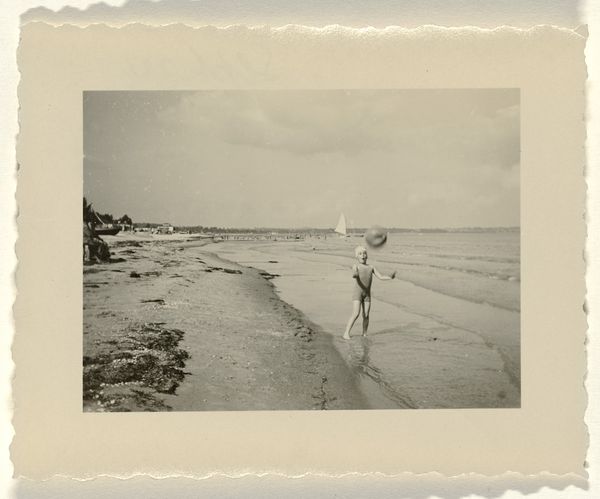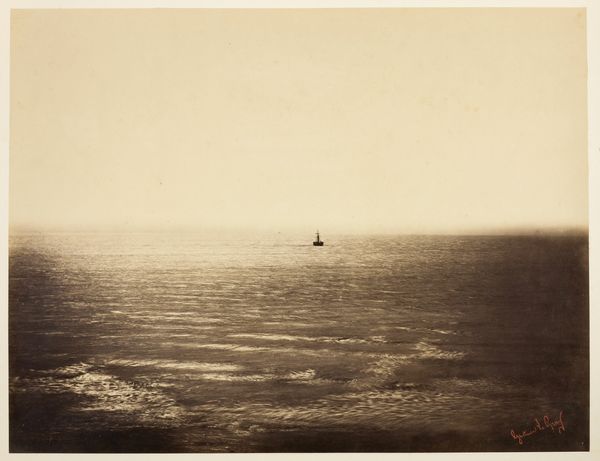
Dimensions: height 184 mm, width 234 mm, height 278 mm, width 432 mm
Copyright: Rijks Museum: Open Domain
Curator: I’m immediately struck by the tranquility of this image, it's almost dreamlike. Editor: That's interesting. For me, it’s the texture. You can almost feel the dampness and grain of the sand beneath your feet, or the constant motion of the waves. The way Rudolf Eickemeyer used the gelatin-silver print medium is pretty astounding. Curator: Eickemeyer was quite active around the turn of the century and beyond, and he embraced artistic photography which aimed to align with painting, promoting the idea of the photographer as artist rather than just a recorder of images. It’s called “Zeegezicht,” or “Seascape,” created sometime between 1900 and 1906. It fits with a time when photography was attempting to define its artistic standing. Editor: Absolutely, I think the selection of gelatin-silver as the medium plays a huge role here. Its sensitivity allowed for incredible tonal range, capturing the subtle gradations of light reflecting off the water. We’re seeing here how a photographic print could be valued as an aesthetic object itself, more than just a reproducible image. Curator: And look at how Eickemeyer framed this scene, not to record detail, but to express the feelings of space. The photo becomes this kind of symbolic scene. Remember that for many at the time, access to scenes like this was related to increasing social mobility. Editor: It does highlight how photography served to capture those experiences of modernity – the leisure time and access to places formerly unavailable. By framing it, it’s not just about the picturesque, but a modern type of leisure as experienced by growing middle classes. Curator: Exactly, Eickemeyer became one of the key figures popularizing the aesthetic potential of the medium at a time when there was still prejudice toward it within established institutions and museums. Editor: Yes, and in doing so he gave form to everyday experience, emphasizing the sensory possibilities embedded in both material and the depicted setting. Thinking about its material reality next to its cultural representation certainly brings up interesting points for discussion! Curator: Agreed. It highlights how artistic vision can shape our perceptions, helping to redefine what it meant to make art at that particular time. Editor: Absolutely, it helps us consider photography's potential for social commentary.
Comments
No comments
Be the first to comment and join the conversation on the ultimate creative platform.
